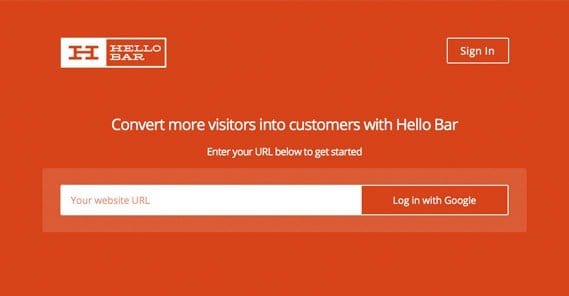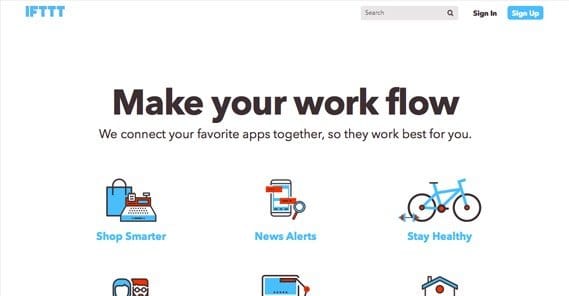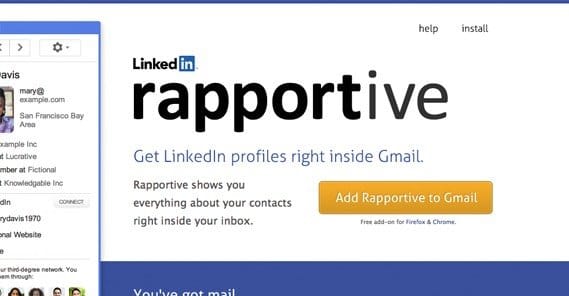101 Growth Hacking Tools to Fuel Your Website

Growth hacking is an interesting concept. It’s nothing new, though. See if this sounds familiar: Using free or low-cost tools to save time and money while promoting and growing a business. That’s basically just what you’ve always done, right? Someone coined the term “growth hack” as an innovative way to bill their concepts, to sell their growth hacking products, and the name stuck.
Even though the concept is nothing new, the trends and tools that have popped up in the last few years certainly are. I’ve worked hard to compile a massive list of tools for you to review and use.
Hopefully you can put them to work and grow your business:
Traffic Acquisition
These tools are designed to help you boost the traffic coming in to your website, through natural and artificial means.
- Pay With a Tweet – A “social locker” that gates your content and requires a tweet to unlock it. Free for a basic plan, with more robust paid plans.
- Click to Tweet – A free tool that allows you to generate preconfigured tweets for your users to post with a single click.
- Nimble – A detailed customer tracking platform that monitors email communications, social signals, follow-ups and sales.
- MixRank – A sales platform that uses enhanced analytics to identify profitable leads and prioritize them over dead ends. Warning: No listed prices online.
- Twilighter (now Highlighter) – An app from AppSumo that allows users to highlight any passage on your site and click to tweet it immediately. Free to set up and use.
- Snip.ly – A variation on a URL shortener that overlays an ad of your choice on the content you link to, giving users a route back to your site.
- Wistia – An online video hosting platform designed for business. Why not just use YouTube? This includes more sales integration and analytics. Arguably better for embedded videos, particularly landing page explainers.
- Po.st – A URL shortener that adds a targeted cookie to the user’s system when they click a link, which allows you to target cookied users with ads at the destination site and only reach the traffic you referred.
- Moz – Possibly the biggest name in SEO, their blog is amazing and the tools they provide help you with every aspect of organic growth and traffic generation through Google web search.
- Crowdfire – A social media analyzer and aggregator that shows you your followers, their activity, and their connection to you.
- Colibri.io – Note: This site is no longer loading; possibly dead. $95 a month – on the expensive side – for detailed customer tracking and engagement monitoring.
Lead Generation
These tools exist to help you generate leads and pull in customers from diverse sources, including both online and offline marketing.
- Hello Bar – An extremely common web marketing tool that puts a welcome bar across the top of your site and allows you to expand it into a customized call to action.
- Bounce Exchange – An exit intent lightbox pop-up system seen commonly on marketing blogs, designed to capture potential customers as they leave without disrupting their browsing.
- SessionCam – A digital screen “recording” tool that monitors user sessions and identifies what they’re doing on your site, to help identify what works and what confuses users.
- Crazy Egg – A web heatmap software that shows click activity on your site. Like a lighter-weight version of SessionCam, only it aggregates data rather than monitors individual users.
- Totango – A system that monitors user usage to identify when a user is showing signs of being deeply engaged, so you can follow up and upsell.
- Unbounce – A detailed landing page analysis and optimization system with plenty of tools to build a new landing page from scratch.
- Optimizely – A robust and useful split testing system that helps you optimize conversions through serious scientific testing.
- VWO – A visual web optimizing software that is designed for split testing websites when you have no experience changing code yourself.
- Clicktale – A user behavior analyzer with built-in testing tools, sort of like a combination between SessionCam and Optimizely.
- Outbrain – A content marketing and advertisement network that allows you to pay to have your posts show up as “related post” links on other blogs in the same niche who are running the system.
- Visistat – An almost scary lead generator that reads the IP address of a visitor and identifies whether or not they’re browsing from an IP known to be associated with a company. Amazingly useful for B2B marketing.
- FullContact – A data gathering app that takes the contact email address and scans a ton of social networks to identify the lead and harvest data about them, for use in later sales and audience segmentation.
- Mailgun – A mass emailer that has triggered email sends for customers who have put in their email, and lots of sales platform integration. Free for 10,000 sent emails per month, with 20 emails per penny beyond that.
- Survicate – Like Qualaroo, this is a web-based survey pop-up that remains in the corner and is very unobtrusive. It’s best used for customer feedback, but also allows content gating to give gifts in exchange for survey fills.
- HitTail – A keyword analysis tool that helps you identify open niches and potentially high quality keywords you may have overlooked.
- LaunchBit – Lead generation using ads and in-email marketing via promoted positioning, specifically with a B2B focus.
Email Marketing
While these apps could fit under lead generation, there are enough focused solely on email that I figure they’re worth their own section. These are tools to help your email marketing, newsletter production, and direct marketing succeed.
- ListBuilder – An AppSumo app that helps you capture emails from customers and interested leads, to promote future content and deals.
- Vero – A triggered email system that captures emails and automatically segments your audience based on their actions on your site, so you can target marketing to different types of users automatically.
- Customer.io – An alternative to Vero, this is another triggered system that tracks user actions and segments their emails based on those actions.
- MailChimp – One of the top-tier email management and newsletter production tools on the market.
- Aweber – One of the primary competitors to MailChimp, and one of the other top-tier email marketing tools out there. Both are great, just pick the one that appeals most.
- Sendgrid – A volume-focused email marketing tool that helps you bypass normal email send limits to reach a bulk mailing list without stressing servers. Includes email analytics.
- SendWithUs – A newsletter creator with visual creation, drip campaign support, split testing and analytics built right in.
- Klaviyo – An email marketing tool that automates cart reminders, creates personal newsletters, helps with audience segmentation, and includes email best practices built in from the start.
- Yesware – Email analytics that primarily focuses on identifying whether or not a user opened your email, so you can get an idea of how enticing your subject lines are.
- Sellhack – A system that you feed in contact information like name or phone number, and it tracks down an attached email address if it’s publicly available.
Analytics
These tools either give you analytics, improve your existing analytics, or perform some task to make your analytics more useful on a day to day basis. I’m not including Google Analytics here, because I assume it’s standard issue for any business today.
- Qualaroo – A tool to implement surveys on your website, to solicit customer feedback at various points in the conversion process. Use it to identify pain points and get customer suggestions.
- Consumer Barometer – A Google app that helps research your conversion process and your customers in a detailed way.
- Typeform – A simple drag-and-drop editor to create forms for your site, usually aimed at surveys, questionnaires, or submission forms.
- Polldaddy – An online survey creator to help you get user feedback and perform market research on a broad scale.
- BuzzSumo – A keyword-based social trend and influencer monitoring web app. Plug in relevant keywords and see what articles are trending, which are most popular, and who is most relevant in the industry.
- User Testing– A crowdsourced UX analysis and testing app. Submit tasks and have actual targeted users perform them and give you a review of how it went.
- Social Mention – Real time social searching that allows you to find whenever your brand name, a keyword, or a specific term is used on social media, with trend monitoring and alerts available.
- KISSmetrics – A detailed analytics panel that gives you a ton of information in an easy to use dashboard. A good rival or supplement to Google Analytics. Warning: can be expensive.
- Flurry Analytics – Part of the Yahoo Developer Suite, Flurry is one of the top-tier mobile analytics systems to go inside apps you create for mobile devices.
- GoodData – An analytics aggregator that takes data from your various analytics sources and compares it, giving you a detailed view of all of your data streams.
- GoSquared – Detailed analytics, trend monitoring, people monitoring and sales all in one place. Billed as “mission control” for your startup.
- AppsFlyer – Detailed mobile analytics that doesn’t require being part of Yahoo’s developer network to access.
- Karmalytics – A limited in scope but focused and useful analytics suite that monitors your brand on Reddit and Hacker News.
- TalkToUsers –Note: This site is no longer loading; possibly dead. A user survey app similar to Qualaroo, only it has simple yes or no questions that allow single click answers rather than form fills.
- Coastics – Note: This site is no longer loading; possibly dead. An app that links with your Google Analytics account and sends you customized reports in your email each day, so you don’t need to visit the site unless you need to look up something unusual.
Automation
These tools are designed to help streamline business processes by improving process flow or automating basic tasks that would otherwise be simple but take up time. Time is money, after all.
- Zapier – A tool that connects web apps you use to create tasks. For example, trigger a new lead entry in your customer management portal when a form is filled out online.
- InfusionSoft – An all-in-one marketing platform, customer management, automation and organization tool. Use this as the foundation and use other tools on this list to supplement its abilities.
- Hubspot – An alternative to InfusionSoft, this massive customer management platform gives you the added benefit of having a ton of excellent blog resources attached.
- Marketo – Yet another all-around customer engagement, management, and marketing platform. Explore its options and compare to the above.
- Drip – A triggered automation tool that sets up actions like pop-ups, notifications, and reminders to happen based on user actions, to automate lead generation.
- Twitfox – A Twitter automation tool that allows you to set rules for follows, follow-backs, favorites, and other forms of engagement.
- IFTTT – If This Then That, a pseudo-coding process flow that automates actions throughout a wide range of possible triggers and actions.
- Ad Espresso – A Facebook ads manager that automates a lot of your ad creation and testing processes.
- Buffer – One part content aggregator and pinboard, one part social media auto-poster.
- Smartly – Facebook and Instagram ad automation with a ton of exceptional tools, and a very high price tag. Seriously, this is crazy expensive.
- TwitterFeed – A simple service that monitors your RSS feed and posts new content to Twitter when it’s published.
Sales
These products make it easier to sell your products online, either through providing a stand-alone storefront or giving you a hosted storefront. Bear in mind that there are dozens of these; I’ve only listed some of the most interesting.
- Gumroad – A hosted web shop that eliminates the need to have a storefront on your own website. Send user traffic to this portal when you want to make a sale.
- Olark – An online web chat system that hovers in the corner of the user’s screen and allows them to chat directly with a sales or support representative the moment they have a question.
- SnapEngage – An alternative to Olark, in that it serves exactly the same purpose. It’s another web-based live chat system, with better integration into sales platforms like SalesForce. Slightly more expensive.
- Marketing.AI- A team-based platform and calendar that helps you keep your entire sales staff on target and up to date with trends, information, deadlines and more.
- Intercom – Though it’s expensive, I can’t not mention this, as it’s on every other list ever written. Essentially, it’s a central platform for all sales communications, regardless of channel.
- Sprout Social – A very robust social media management platform that works for both lead generation and for sales.
- MyPresences – A sales and marketing platform designed specifically to enhance and encourage local marketing, engagement, and awareness.
- Rapportive – A broad platform for tracking information and communications with individual leads, aggregating data pulled from online, submission forms, and social media interactions.
- ProsperWorks – A similar sort of customer engagement and tracking platform, designed specifically to work with Google apps.
- Anygrowth – A robust growth hacking, monitoring, aggregation and automation platform for blog, email, and social management. It does a lot.
Miscellaneous
These are tools that just don’t quite fit under one of the other categories. Some of these can be exceptionally valuable, though they might also be a little niche to use depending on your business. Let me know if any of them work for you!
- Square – A tiny device that plugs into your mobile device and allows for payment processing on the spot, without an expensive point of sale system.
- Upwork – A platform you can use to hire freelancers to code, design apps, do graphics work, or write content for your website.
- Freelancer – Another platform that allows you to hire freelancers for a variety of purposes, from graphic design to coding to writing and more.
- Writer Access – A “content mill” that allows you to buy web content in bulk.
- Textbroker – One of the cheapest content mills for web content available, and probably the lowest quality that is still readable.
- Constant Content – A higher quality article marketplace where you can buy existing content or send out casting calls for specific writing assignments.
- ProductHunt – A community where influencers and CEOs can share new and upcoming tools to help make everyone’s lives easier.
- Capsulink – An amazing new tool that converts site links to “capsules” that can be managed and edited later. Link to a piece of content and have that content change its URL? Edit the capsule and every link to that content on your site changes immediately.
Techniques
Okay, so these aren’t specific tools. They’re more like strategies you can use that cost you nothing but have the potential to generate leads, engage with your traffic, and convince them that buying your product is a good idea.
- Comment on various forms of media, not just blog posts. For example, slideshare presentations and Amazon book reviews both work well to attract additional attention.
- Submit your best content for consideration in weekly/monthly roundup posts or to site owners known for doing “best of” compilation posts. Do the same submitting apps and software to specific top lists.
- Use a social locker to hide certain high-value content and require social shares or follows to access it.
- Join groups on social networks like Facebook, LinkedIn, and Google+. Participate in those groups and become a valuable member and mentor.
- Search for popular tools in your industry that have gone defunct or no longer exist, and write posts detailing alternatives. If possible, create your own alternative.
- Identify powerful influencers in your niche and offer them trial copies or discounts on your product or service. Don’t demand a review in exchange; let it come naturally.
- Identify the people who publish news in your industry and strive to keep them notified whenever something big is about to happen with your site, product, or content.
- Repurpose old content to give it a new life in your marketing plan. Take blog posts and make videos, take videos and make infographics, take infographics and make slideshares, take slideshares and make blog posts, and so on.
- Seek out people linking to your competitors and, if you’re confident in the quality of your product, ask to have your link added or replacing theirs.
- Find out what makes users decide they want to stay with your service and figure out how to provide that baseline as quickly as possible.
- Identify the boring pages on your site, like log out pages, forgotten password pages, and testimonial pages, and add in creative little Easter eggs to make them more interesting and give your business some character.
- Come up with cool exclusive content you can give to your users as an added free benefit for being users. Ebooks, webinars, hangouts, gifts, even a member forum can work.
- Whenever possible, turn it into a game. This is particularly effective for referrals. Meaningless points and achievements can dramatically increase engagement, and adding on tangible rewards makes it even better.
- Give users benefits for successful referrals, like how Dropbox gave users additional storage for each person they referred.
- Don’t forget the downsell. If a user signs up – or cancels their service – you can attempt to downsell for a more attractive albeit limited version of your product.
- Divide and conquer. Break up large tasks into smaller tasks and figure out how many of those small tasks are common processes that can be automated.
- Spend less time worrying about social media fans and more time worrying about qualified leads; a smaller audience is still better if more of them are buying.
- Don’t be afraid to be creative and experiment. It’s easier to be agile when you’re a small startup than it is once you’re entrenched.
- Branding is great, but avoid the tired clichés like the .io domain and the missing e in –er names.
- Do regular audits of what is and isn’t working, and focus your time on what’s working. Ditch what isn’t.

 ContentPowered.com
ContentPowered.com












Priya Sharma
says:Nice list of growth hacking tool. Well this is the time of AI and working hard for developing business reach while we have tools for Lead generation is useless. I have used few tools for my business for growth hacking like AeroLeads, rainClutch, Rapportive and this tools help me a lot.